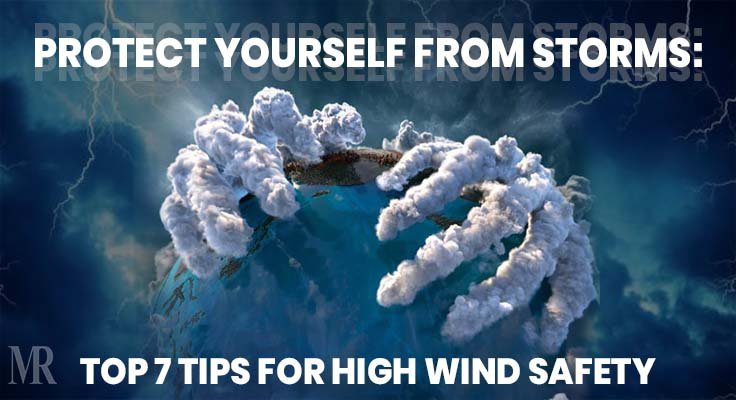Protecting Yourself From Damaging Winds In Fast-Moving Storms

Table of Contents
Understanding Fast-Moving Storm Threats
Identifying High-Risk Areas
Knowing your risk is the first step in protecting yourself from damaging winds in fast-moving storms. Certain geographical locations are more prone to severe weather than others. For example, Tornado Alley in the central United States is infamous for its high frequency of tornadoes. Similarly, coastal regions are susceptible to severe thunderstorms and hurricane-force winds. To determine your risk, diligently check local weather forecasts using the following resources:
- Using weather apps: Download reputable weather apps on your smartphone to receive real-time alerts and forecasts. Many apps provide detailed radar imagery and severe weather warnings.
- Understanding storm warnings: Familiarize yourself with the difference between a tornado warning (a tornado has been sighted or indicated by weather radar) and a severe thunderstorm warning (severe thunderstorms capable of producing damaging winds, large hail, and/or tornadoes are occurring).
- Checking National Weather Service websites: The National Weather Service (or your country's equivalent) provides reliable and up-to-date information about severe weather, including forecasts, warnings, and advisories. Their websites are invaluable resources for assessing your risk of high-wind events and other severe weather phenomena, including storm surge.
Recognizing Warning Signs
Recognizing the warning signs of an approaching fast-moving storm is essential for giving yourself enough time to take protective measures. Be vigilant for the following:
- Darkening skies: A sudden and dramatic darkening of the sky often precedes a severe storm.
- Sudden changes in wind direction and speed: A significant increase in wind speed and a noticeable shift in wind direction can indicate an approaching storm front.
- Unusual cloud formations: Look out for wall clouds (a large, ominous, rotating cloud that often precedes a tornado) and other unusual cloud formations, like rotating clouds or unusually dark and heavy clouds.
- Loud rumbles of thunder: The sound of distant thunder, especially if it is unusually loud and prolonged, can be a sign of an approaching severe thunderstorm. These approaching storm indicators should trigger immediate action.
Implementing Protective Measures Before the Storm
Preparing Your Home
Before a fast-moving storm hits, take steps to secure your property and minimize potential wind damage. These storm preparation measures can significantly reduce the risk of injury and property loss.
- Bringing in loose objects: Secure or bring inside any loose objects that could become airborne projectiles in strong winds, such as patio furniture, trash cans, garden decorations, and anything else not firmly anchored.
- Trimming trees and shrubs: Overhanging branches can easily break and cause damage during high winds. Trim any branches that are close to your house or power lines.
- Boarding up windows: If you live in an area prone to extremely high winds, consider boarding up your windows with plywood or storm shutters to prevent them from breaking.
- Securing garage doors: Garage doors are particularly vulnerable to strong winds. Ensure that your garage door is securely closed and locked.
Assembling an Emergency Kit
Having a well-stocked emergency kit is crucial for sheltering in place during a fast-moving storm. Your storm survival kit should include:
- First-aid kit: A comprehensive first-aid kit with bandages, antiseptic wipes, pain relievers, and other essential medical supplies.
- Water: Store at least one gallon of water per person per day for several days.
- Non-perishable food: Stock up on non-perishable food items that require no refrigeration, such as canned goods, energy bars, and dried fruit.
- Flashlights and batteries: Ensure you have reliable light sources in case of a power outage.
- Battery-powered radio: A battery-powered radio will allow you to stay informed about weather updates and emergency instructions.
- Medications: If you take prescription medication, ensure you have an ample supply on hand.
Seeking Shelter During a Fast-Moving Storm
Choosing the Safest Location
When a fast-moving storm is imminent, finding the safest shelter is paramount. The best location depends on the severity of the storm.
- Interior rooms on the lowest level: If a basement is unavailable, choose an interior room on the lowest level of your house, away from windows.
- Basements (if available): A basement is generally the safest place to be during a severe storm.
- Storm cellars: If you have a storm cellar, this is the most secure option.
- Sturdy interior closets: A small, interior closet, preferably one without windows, can also offer some protection.
Staying Safe Inside
Once you're in your chosen shelter, take the following precautions:
- Staying away from windows: Avoid windows and glass doors as they are the most vulnerable points in a building during high winds.
- Covering yourself with blankets or mattresses: This added layer of protection can shield you from flying debris.
- Using a helmet for added protection: A helmet can help protect your head from falling objects.
- Staying informed via weather radio: Continue to monitor weather updates through a battery-powered radio.
Actions After the Storm
Assessing the Damage
After the storm has passed, it’s crucial to assess the damage safely.
- Checking for structural damage: Carefully inspect your home for any signs of structural damage, such as cracks in the foundation or walls.
- Downed power lines: Stay away from downed power lines, as they may still be energized and extremely dangerous.
- Gas leaks: Check for gas leaks by sniffing for the smell of gas. If you detect a leak, evacuate immediately and contact your gas company.
- Reporting damage to authorities: Report any significant damage to your local authorities.
Seeking Help and Support
Following a severe storm, you may need help and support. Here are some resources:
- Contacting insurance companies: Contact your insurance company to report any damage and begin the claims process.
- Seeking assistance from FEMA or Red Cross: If you have experienced significant damage or displacement, contact the Federal Emergency Management Agency (FEMA) or the Red Cross for assistance.
- Contacting local authorities: Your local authorities can provide information on disaster relief efforts and other resources available to storm victims.
Conclusion
Protecting yourself from damaging winds in fast-moving storms requires preparation, awareness, and decisive action. By understanding the threats, preparing your home and assembling an emergency kit, seeking appropriate shelter, and knowing what to do after the storm, you can significantly increase your safety and the safety of your loved ones. By taking these precautions and understanding the threats posed by damaging winds in fast-moving storms, you can significantly increase your safety and the safety of your loved ones during severe weather events. Don't wait for the next storm; start preparing today. Your life may depend on it.

Featured Posts
-
 Todays Nyt Mini Crossword April 25th Answers Revealed
May 20, 2025
Todays Nyt Mini Crossword April 25th Answers Revealed
May 20, 2025 -
 Agatha Christies Unpublished Letters Expose Dispute Over Crucial Book
May 20, 2025
Agatha Christies Unpublished Letters Expose Dispute Over Crucial Book
May 20, 2025 -
 Tampoy Eksereynontas Ton Erota Ti Fygi Kai Ti Syllipsi Stin Koinonia Mas
May 20, 2025
Tampoy Eksereynontas Ton Erota Ti Fygi Kai Ti Syllipsi Stin Koinonia Mas
May 20, 2025 -
 China Launches Initiative To Build Space Based Supercomputer
May 20, 2025
China Launches Initiative To Build Space Based Supercomputer
May 20, 2025 -
 Robert Pattinsons Relationships From Twilight To Suki Waterhouse And Beyond
May 20, 2025
Robert Pattinsons Relationships From Twilight To Suki Waterhouse And Beyond
May 20, 2025
